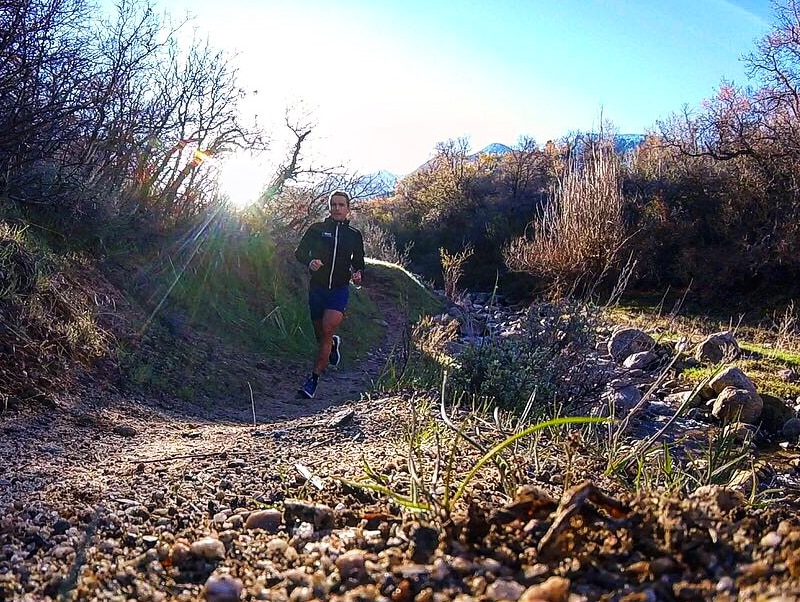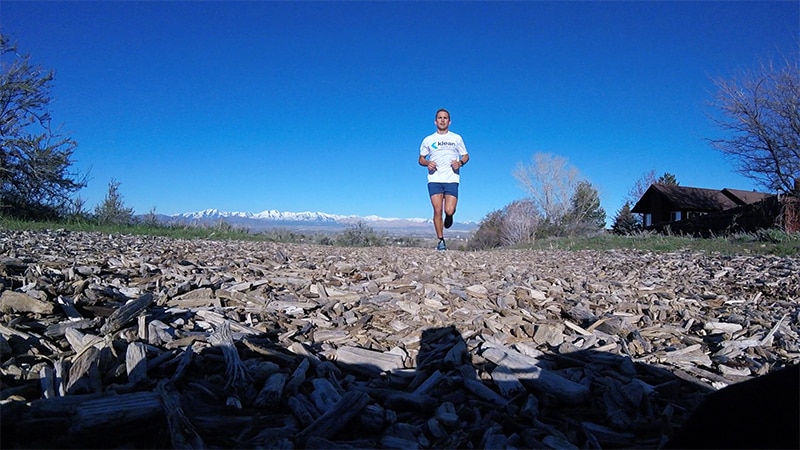Altitude Training Tips and Adaptation by Sponsored Triathlete Kevin Portmann
I was born and raised in the French Alps, so initially when I scheduled two training camps in Salt Lake City this summer, I thought I would be “used to” the altitude, having spent much of my life above sea level. However, I did not factor in (or simply chose to ignore) the last 10 years spent at sea level in New York and Oceanside! I could not have been more wrong. Little did I know, I was in for a treat!
For my first four-week block, I stayed in the valley 5,000 feet above sea level. The last four weeks were spent in Park City, which sits at 7,000 feet. On my first training day in SLC, I had a light swim and a one-hour trainer ride. What was supposed to be easy on the body turned out to be very challenging: I was gasping for air on the swim — a technique-focused session with lots of time spent at the wall — which turned out to be a hard one! I shrugged it off, thinking I was just tired from the long drive the day before. But the trainer ride proved me wrong. I could only stay within my recovery zone, with my heart rate being about 30 beats above where it normally is at that intensity. When dismounting the bike, I felt extremely light-headed and dizzy. My coaches and I quickly realized that the altitude was affecting me, which was a good thing because the camp would be more beneficial in the long run, but at the same time I had to be very careful with my recovery. So to help with the adaptation, we really focused on recovery after each training.
Here is how Klean Athlete® came into play to help me adapt and make my camps a success.
I choose their products because they give me the peace of mind that the supplements I use are free of any banned substances listed by WADA, thanks to the NSF Certified For Sport® organization.
Daily supplements
I took Klean Omega, Klean Multivitamin, and Klean-D (vitamin D) daily. I added the latter for the camp because I knew I wouldn’t be getting as much vitamin D naturally from the sun as I do when training back home.
Sleeping/napping
When I arrived in SLC, my coach wanted me to get more sleep than I normally would, to help speed up recovery and altitude adaptation. Since I am not a good sleeper, I started using Klean Melatonin to help me fall asleep quicker. After a few trial and errors where I used 9mg, 12mg and 15mg before going to bed, I found out that 12mg was the right dosage for me. It was a game changer, as it allowed me to get better, less interrupted sleep. The quality of my sleep improved, which really helped me feel better day after day.‡
Recovery drinks after each training session
Whether I was doing an easy strength & conditioning session, a light jog, a long swim, or a hard intensity trainer ride, I would make sure to bring my recovery drink with me. At sea level, I would have a recovery drink when the sessions are longer than 90 minutes. But at elevation, I chose to have one after every single session. I felt it really helped me adapt and recover faster.
For the light sessions, I would use 1 scoop of Klean Recovery (chocolate flavor) with 1 scoop of Klean Isolate (no flavor) mixed with almond milk.
For the harder intensity sessions, I would add 2 scoops of Klean Recovery, 1 of Isolate and blend them with a banana and almond milk.
If the training was indoors or if it was done during a hot day, I would add frozen berries to make a refreshing smoothie. If needed, I add spinach for some extra iron (you don’t taste it!) and the smoothie tastes delicious. Studies show that those recovery drinks are more effective when taken within 20-30 minutes after your training, so I would make sure to have it within 20 minutes. If I knew I wouldn’t get home within a 20-minute window, I’d prepare it ahead and bring it with me.
It took me about 10 days before feeling like myself again during my first camp, and a little more during my second camp in Park City. I felt that the benefits of taking Klean supplements, especially during these training camps, really helped my body adapt quicker.
So what are my altitude training tips?
- Adaptation periods vary by person, but overall, I think that we need to go through that phase, and need to give our bodies what they need to adapt well. Consider this & work closely with your coach/trainer if you ever find yourself training at a higher elevation.
- Take the recovery phase seriously, don’t go too hard on the easy days, and plan for more sleep than normal. This, paired with proper training and nutrition, helped me feel more like myself quicker than I otherwise would have.
I hope this will be helpful to some of you and that you give it a shot!
Happy training all!
You can follow Kevin Portmann on:
Instagram: https://www.instagram.com/kevportmann/
Twitter: https://twitter.com/kevportmann
Topics


